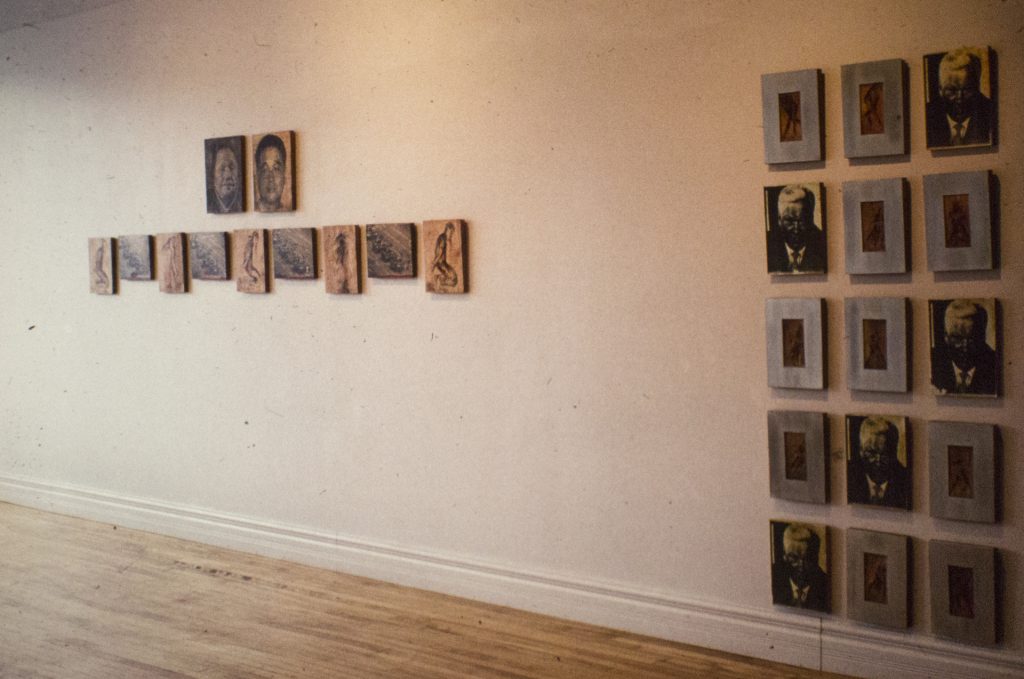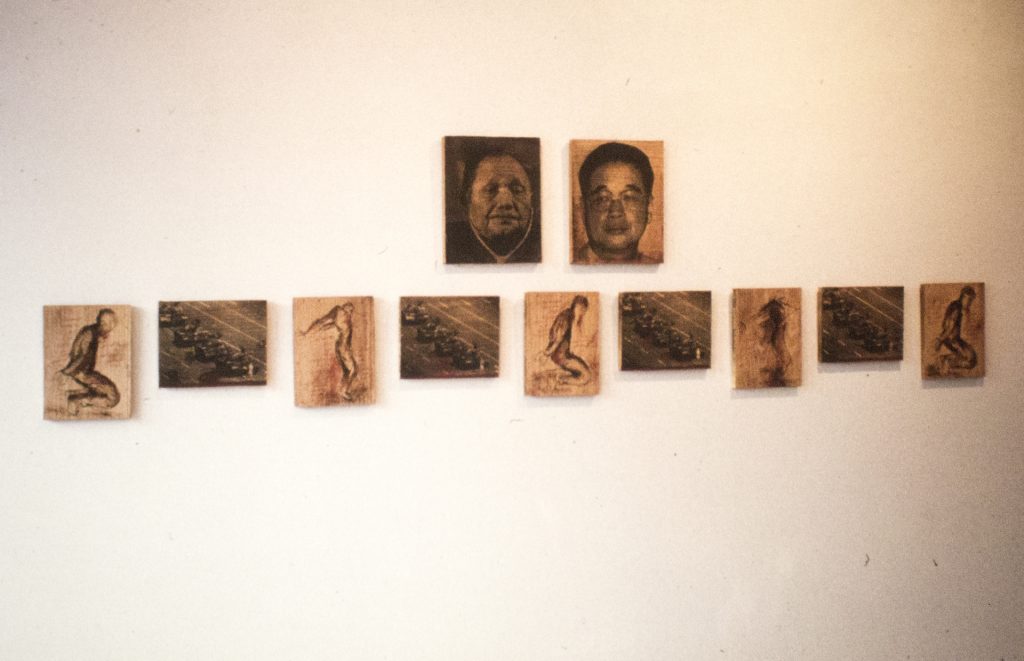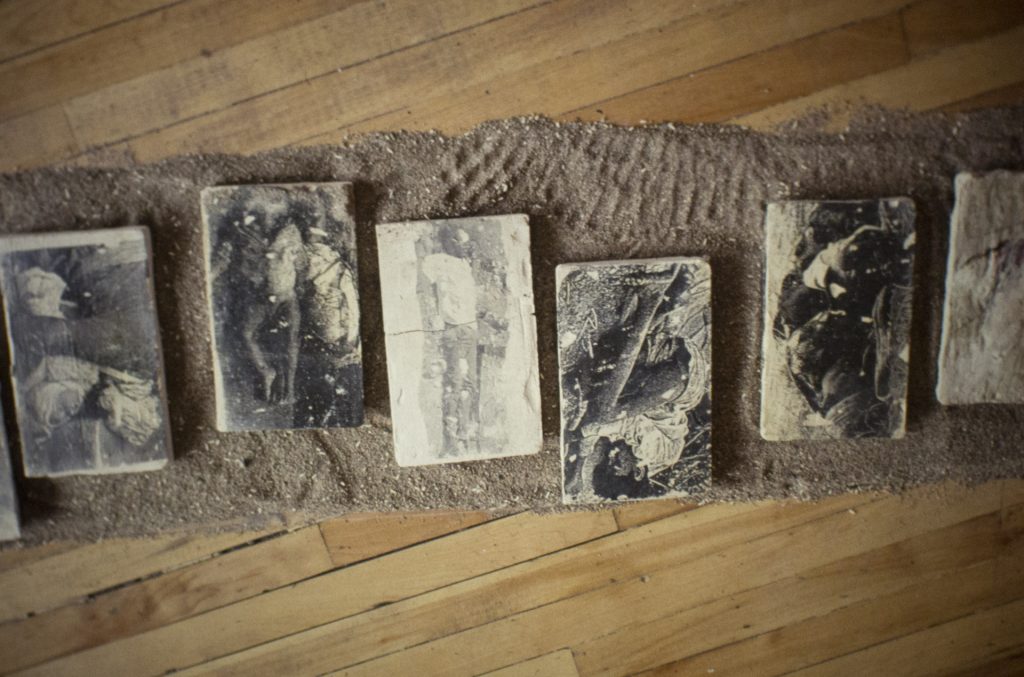In this exhibition, the artist explores the theme of politics which she intimately links to a world of violence. Her work conveys images of war victims, anonymous human bodies, bounded, tortured and wounded. The exhibition groups 110 artworks which blend in painting and drawing techniques as well as the transfer of photographic images on wood, metal or clay planks.
This installation consists of a series of five figurative pictures composed each of several wood and metal panels which are disposed so as to form a rigorous grid. A rhythm is also created by the repetition of certain images and by the regular format of the planks. A close link is woven between the art works through the element of repetition as well as through the opposition created by the contrast between the suffering victims and the icy facial expressions of their aggressors. To this, a sixth piece is added directly onto the floor. It consists of a transfer of images representing cadavers and war victims on clay planks deposited directly on sand.
The choice of materials, the format and the subject presented bear witness to the urgency of transmitting a painful and troubling message of our society.





Shahla Bahrami
Shahla Bahrami's work finds its source in the chador. A semicircular garment, the chador is worn by Muslim women to hide their hair and body. Today, this garment is both a response to religious obligations and a symbol of resistance to the encroachment of Western culture. What may surprise is that despite its powerful religious and cultural value, this item of clothing appears only very rarely in Islamic arts. After fourteen centuries under the influence of Islam, the image of Muslim women in painting remains the same. Intact. This pictorial continuity, which does not carry the movement of society during this period, is considerable. The Egyptians do the same: they continue to paint on the papyrus the servants of the pharaohs and in Persian miniature, the women dressed in bright colours. These approaches and artistic productions refuse to capture the essence and the real image of Muslim women in today's society.
Artist Profile
